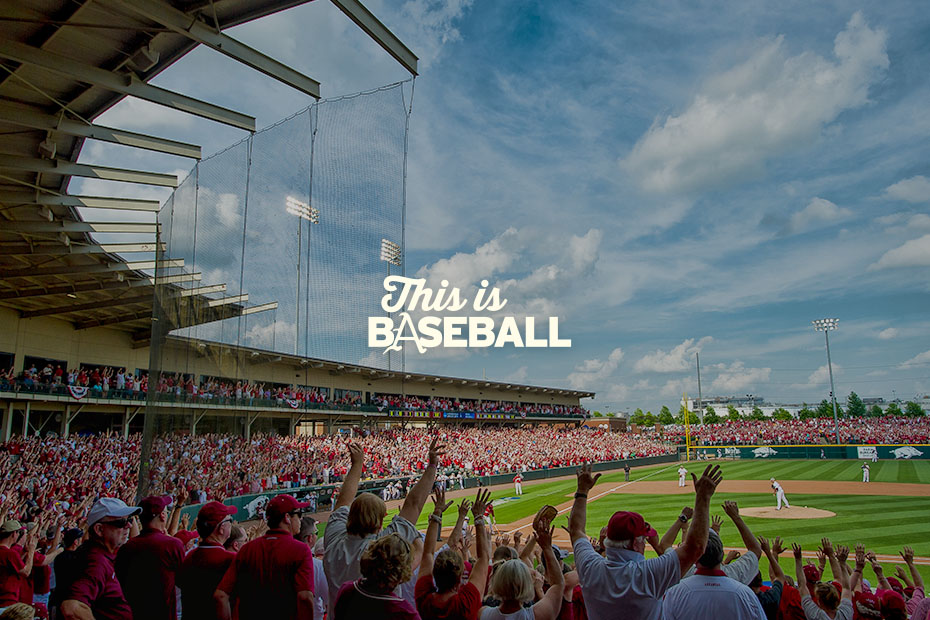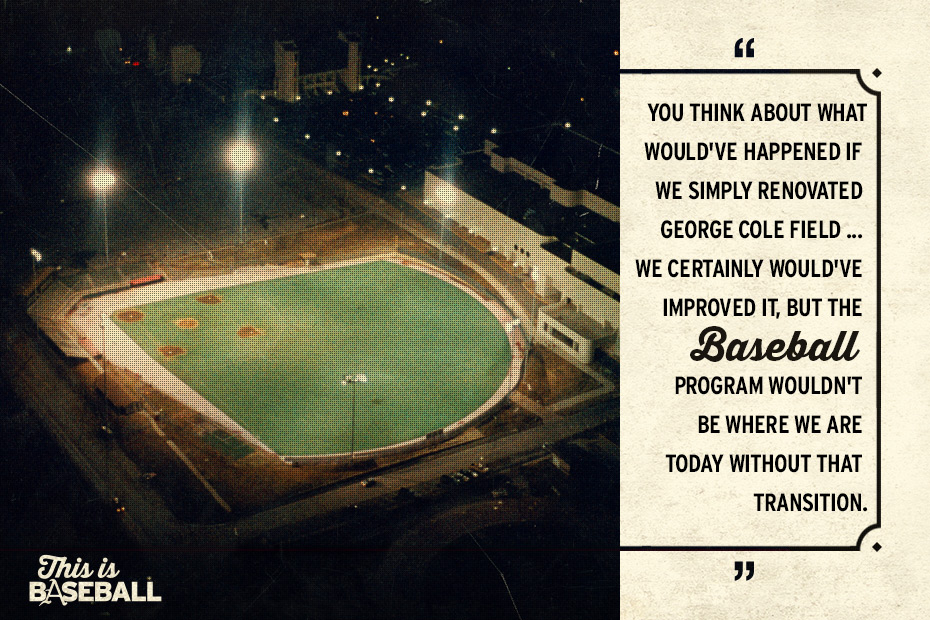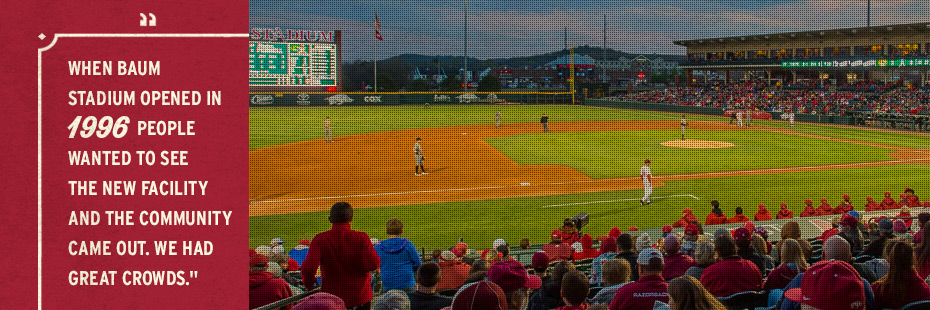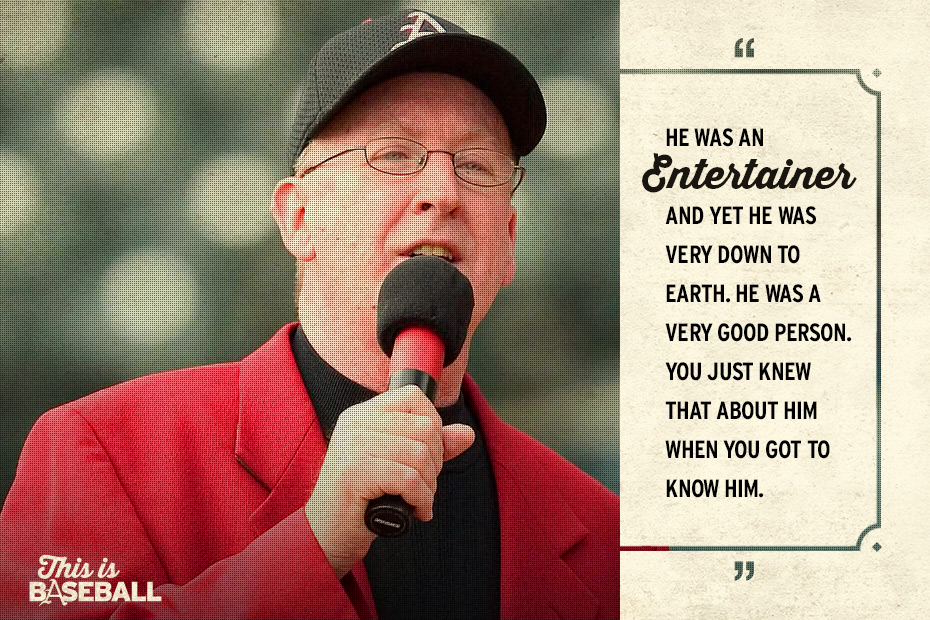
This Is Baseball, Part One: Building Traditions
This. Is. Baseball!
That was the signature phrase conceived by legendary public address announcer Larry Shank, who revolutionized the gameday experience at first George Cole Field and then Baum Stadium during his 18 seasons representing the program as the in-stadium “Voice of Razorback Baseball.”
As we approach the start of another baseball season at the University of Arkansas, we take an opportunity to look back at the genesis of traditions and factors that helped guide Razorback Baseball as one of the sport’s most storied programs. This four-part series is designed to bring back fond memories to longtime Razorback Baseball fans while helping the next generation of Razorback fans get up to speed on the history of a program that was literally built from dirt.
IN THE BEGINNING
Before Baum Stadium opened in 1996, Razorback Baseball called George Cole Field home. Despite its importance to the program, it was clear that for the baseball team to thrive and grow, a new facility was needed.
Kevin Trainor, associate athletic director of public relations and baseball sport administrator: “Baseball had come a long way just at George Cole Field. It was a big deal when our former major leaguers, Kevin McReynolds, Tim Lollar and Johnny Ray, got together to contribute to add lights. That really took baseball to a new level. Instead of playing during a Friday afternoon, we were able to host Texas on a Friday night and that just brought a different dynamic to the program. So baseball was already taking off and had taken major strides, including playing in the Southwest Conference, one of the best leagues at the time.”

Norm DeBriyn, Razorback Baseball head coach, 1970-2002: “When you go back to George Cole Field – which was located where Fred W. Smith Football Center is currently situated – I wanted to renovate there because all we had was a field and two dugouts. It had no bathrooms and nothing else … nothing for the players to change into and no locker rooms. We just needed something more and for some reason, Coach Frank Broyles didn’t want to build there. His vision, and he’s very visionary, was to come down on this land and build here, which was done. A lot of the concepts were his. I can remember him saying, ‘I want to walk in on a concourse level like at Bud Walton, and be able to walk down to our seats from the ground level,’ and that’s what we have.”

Dave Van Horn, Razorback Baseball head coach, 2003-present: “Baum Stadium was a big part of coming back here. If we didn’t have Baum Stadium, Arkansas wouldn’t be able to survive in this league. You’ve got to have this type of facility to recruit to, especially when you’ve got a state with a small population and you have to get a lot of your kids from out of state. I think without this ballpark, I probably wouldn’t have come back. Northwest Arkansas’ growth, the construction of an airport that we can use to fly in recruits, our ballpark and beautiful campus, playing in the best conference in the country … it all added up to me. This is now one of the top jobs in the country.”
LARRY SHANK
It may be hard to believe now, but there was a time when Razorback Baseball had a ‘run of the mill’ game experience. Despite DeBriyn fielding great teams, attending a baseball game could be described as a leisurely afternoon at the ballpark. Larry Shank would change all of that.
Norm DeBriyn: “We talked about spicing up the program some time ago, and John Leudtke, our pitching coach, found Larry for us. I remember him telling me, ‘Norm, I found a guy who I think will be a great PA announcer.’ And that’s how Larry came on board. The first time I met him, you could tell that he bubbled with confidence and that he loved being a PA. I felt really good and it was a slam dunk that he came with us. After he was here, I realized what we had in him.”
Kevin Trainor: “Larry wasn’t a baseball guy and I think that helped him in ways because traditional baseball people wouldn’t have come up with his ideas. Larry was about making it an enjoyable experience for fans and for the people at the ballgame. Baseball has a lot of downtime as a game and what Larry could do was keep people engaged and entertained in a way that made them better fans. He had a great sense of humor, a man of many talents and there are still fans today that come up to the ballpark and miss seeing Larry sing the National Anthem on Sundays which he always did.”

Norm DeBriyn: “When Larry first came into our program, LSU Baseball was just a step above everybody else. They won four or five national championships, almost unheard of in college baseball. During the first year we were at Baum Stadium and Larry Shank was with us, I can remember Skip Bertman, the LSU baseball coach who later became their athletic director, making a comment, ‘Where did you get this guy? What are you paying him?’ Boy, his wheels were turning and LSU’s fan support was tremendous at the time and Bertman said they’d love to have a guy like him.”
Dave Van Horn: “Larry was incredible. He brought a lot of energy to the ballpark and he had a lot of personality. We all knew when Larry left that it would be hard to get that back, but he got it going for us a bit. What he did for our program as far as getting out there on the balcony, putting himself out there a little bit and getting the crowd going … at other ballparks you see it start with the fans. They do it and they come every game and start a little bit of tradition there.”
